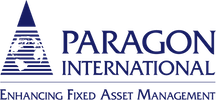Your organization has just selected a new Enterprise Resource Planning (ERP) system. The next decision: choosing a dedicated fixed asset system vs ERP fixed asset module.
Many factors go into the decision of whether to manage fixed assets using an add-on module from the ERP vendor or a dedicated fixed asset management solution. While ERP systems are excellent at integrating financial information and automating customer order data, fixed asset management is not the main development focus of ERP system, and an add-on module does not contain the robust feature set of a dedicated solution.
Here is a quick “at a glance” summary of key features and benefits to consider when evaluating whether to use a dedicated fixed asset system vs ERP fixed asset module.
Why ERPs Struggle with Income Tax Reporting
- ERPs are built for Accounting and Finance, not Tax
- Tax law changes almost every year; i.e., Bonus Depreciation
- Tax departments need unique book calculations
- Tax might need different “placed in service date”
- Tax department need to run “what if” scenarios and projections
- Tax needs to report by multiple structures: i.e., single, consolidated, business unit
- Many Tax departments don’t have access to ERP to modify asset details
- Tax must report on prior year depreciation
- Tax needs an easy process to reconcile Book vs Tax
- Tax needs easy to access forms and custom reports
When facing the decision between implementing a dedicated fixed asset system vs ERP fixed asset module, the key differentiating factors are functionality, ease-of-use, cost, and compliance issues. The following table outlines the advantages offered by dedicated fixed asset management solutions in each of these areas.
| Features | ERP Fixed Asset Modules | Dedicated Fixed Asset System |
| Ease of Use | Simple Tasks can take many steps and lead through several screens. | Takes fewer steps and less time. Screens are designed to quickly pull in all the necessary information. |
| Interface | Created to match ERP system, not better productivity for fixed asset managers. | Planned and developed to aid efficiency of fixed asset managers. |
| Technical Support | Not well-versed in the intricacies of depreciation. | Trained to specifically support fixed asset accounting. |
| Functionality Beyond Depreciation | Primarily addresses tax, lacking advanced features for inventory or construction-in-progress. | Addresses the complete lifecycle of fixed assets, including construction-in-progress and physical inventories. |
| Reporting | Only basic fixed asset reports are included. Creating customized reports (while the data is abundant) can be complicated and often requires the help of consultants and/or your IT department. | Includes much larger selection of useful fixed asset reports in the standard system.
Includes a report generator that enables fixed asset managers to create their own custom reports and, in some cases, to modify standard reports. |
| Cost | High. Often requires expensive consulting engagements to set up, modify, or implement tax law changes. | Affordable. Designed for the needs and budgets of various sized organizations. Tax updates are included with subscription. |
| Tax Law Compliance | Depreciation tax law changes take a long time to be incorporated, if at all. Consultants are often required. Depreciation changes built into a general release might be blocked by your IT department, if the update impacts multiple departments. | Timely, regular software updates to reflect tax law changes. |
| Sarbanes-Oxley Compliance | Compliance concerns generally focused on general ledger and accounting areas, rather than fixed assets. | Security controls limit access to fixed asset data and track who makes changes at the individual asset level. |
Fixed asset management is typically a very small part of what ERP research and development teams work on. However, it is the exclusive focus of dedicated fixed asset systems such as Sage Fixed Assets. Here are some specific features of the Sage Fixed Assets solution to consider when making the fixed asset system vs ERP fixed asset module decision.
Fixed Asset System vs ERP: Why Use Sage Fixed Assets
- Most Complete Tax Rules in Industry
- Over 300,000 IRS Tax Rules and Depreciation Methods
- Updated Annually and as Tax Laws Change
- Up tp 20 Books using IRS and GAAP Rules
- Internal GAAP, Federal, State, AMT, ADS and 15 Custom User-Defined
- Over 30 Standard Reports Built-in, including Tax Forms and Worksheets
- Custom Report Writer Option with Graphics
- Over 50 Depreciation Methods, including Bonus Depreciation Section 168 and 179
- Easy Wizard-Based Import Process and Tax Projections
- Unique Audit Advisor Feature and Tax-Specific Wizards
- Over 18 User-Defined Asset Fields
- Time-Saving Bulk Edit of Critical Depreciation Fields
- ERP Agnostic – Integrates with Sage and Other ERP Systems
Want more information about whether a dedicated fixed asset solution is right for you? Contact us today to talk to one of our fixed asset experts.
(Source: Sage)




